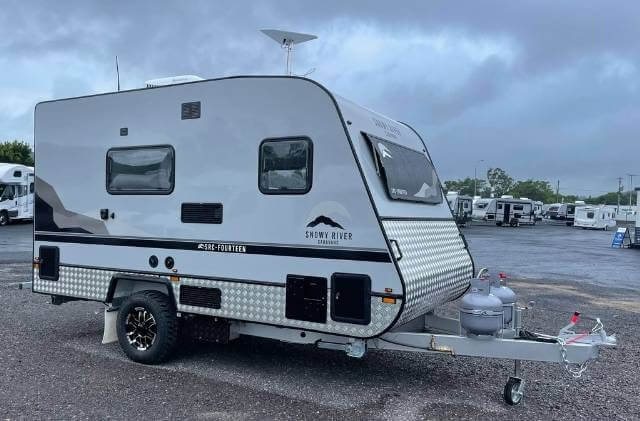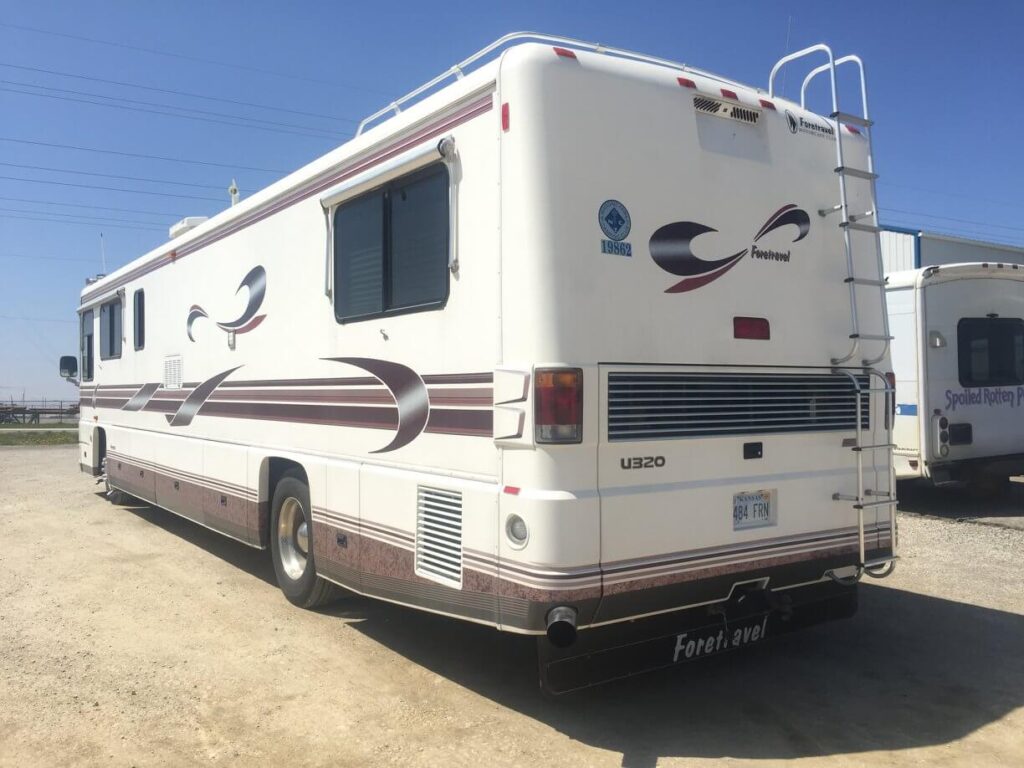Welcome to the wild world of RV living! It’s a magical place where the open road is your backyard, and the great outdoors is your living room. But even in this idyllic setting, things can go wrong. And one of the most frustrating problems that can crop up is a malfunctioning RV kitchen exhaust fan.
Picture this: you’re in the middle of cooking up a delicious meal, the smells of sizzling bacon and freshly baked biscuits filling the air. But suddenly, you notice that the exhaust fan isn’t working. No airflow. No relief from the heat. And before you know it, your RV is starting to feel like a sauna. Trust us, it’s not a good time.
But fear not, dear RVers! We’re here to help you troubleshoot and fix this pesky problem. In this blog post, we’ll walk you through the symptoms of a malfunctioning RV kitchen exhaust fan, offer up some basic and advanced troubleshooting tips, and let you know when it’s time to call in the pros. So grab your toolkit and let’s get to work!
7 Symptoms of a malfunctioning RV kitchen exhaust fan

There are several symptoms that may indicate that your RV kitchen exhaust fan is not functioning properly:
- No airflow: This is perhaps the most obvious symptom of a malfunctioning RV kitchen exhaust fan. If the fan isn’t moving any air at all, it’s not doing its job.
- Weak airflow: If the fan is spinning, but the airflow is weak or barely noticeable, it may be time to take a closer look at the issue.
- Strange noises: A functioning RV kitchen exhaust fan should operate smoothly and quietly. If you start hearing strange noises coming from the fan, it could be a sign of a problem.
- Fan turning on and off unexpectedly: If the exhaust fan seems to be turning on and off at random, it could be an issue with the fan controller or wiring.
- Smoke or odors not being properly vented: An exhaust fan’s primary function is to remove smoke, odors, and excess heat from the RV kitchen. If these things are not being properly vented, it’s a clear sign that something isn’t working as it should.
- Increased cooking times: If it’s taking longer than usual to cook food in your RV kitchen, it could be a sign that the exhaust fan isn’t functioning properly and is not removing excess heat from the space.
- Overheating: If the RV kitchen starts to feel hot and stuffy, it could be a sign that the exhaust fan is not working as it should and is not properly ventilating the space.
If you notice any of these symptoms, it is important to address the issue as soon as possible to prevent further damage to the exhaust fan or to the RV itself.
Basic troubleshooting tips
Okay, so you’ve noticed that your RV kitchen exhaust fan isn’t working as it should. What do you do now? Before you panic or call in a professional, there are a few basic troubleshooting steps you can try on your own. These simple checks and adjustments may help resolve the issue and get your exhaust fan back up and running in no time.
Here are some basic troubleshooting tips to try:
- Check for any obvious issues or blockages: Make sure the fan blades are not obstructed by any debris or foreign objects. Also, check the vent and the area around the exhaust fan for any blockages or restrictions.
- Check the power source: Make sure the exhaust fan is properly plugged in and receiving power. You may also want to check the fuse or circuit breaker to ensure that the power is flowing properly.
- Check the wiring and connections: Make sure all the wiring and connections are secure and functioning properly. This includes the wiring to and from the fan, as well as any connections to the fan controller.
If none of these basic troubleshooting steps resolve the issue with your RV kitchen exhaust fan, it may be time to move on to more advanced troubleshooting techniques. But don’t worry, we’ve got you covered there too!
Some Advanced Troubleshooting Steps

If the basic troubleshooting steps outlined above do not resolve the issue with your RV kitchen exhaust fan, it may be necessary to dig a little deeper. Here are 10 more advanced troubleshooting steps you can try:
- Check the fan motor: The fan motor is responsible for turning the blades of the exhaust fan. If it is damaged or worn out, it could be the cause of the malfunction. You can try cleaning the motor and checking for any visible damage or wear and tear. If the motor appears to be in poor condition, it may need to be replaced.
- Check the fan controller: The fan controller regulates the speed and operation of the exhaust fan. If it is damaged or malfunctioning, it could cause issues with the fan. You can try cleaning the controller and checking for any visible damage or wear and tear. If the controller appears to be in poor condition, it may need to be replaced.
- Check the fan housing: The fan housing is the protective casing that surrounds the exhaust fan. If it is damaged or cracked, it could allow debris or foreign objects to enter the fan and cause problems. You can check the fan housing for any visible cracks or damage, and repair or replace it as needed.
- Check the vent: The vent is the opening through which the exhaust fan removes smoke, odors, and excess heat from the RV kitchen. If the vent is blocked or restricted, it can cause problems with the exhaust fan. You can check the vent for any debris or blockages, and clear them as needed.
- Check the fan blades: The fan blades are responsible for moving the air through the exhaust fan. If they are damaged or bent, it can cause issues with the fan. You can check the fan blades for any visible damage or wear and tear, and replace them as needed.
- Check the wiring: The wiring for the exhaust fan is responsible for carrying power to the fan and its components. If the wiring is damaged or loose, it can cause problems with the fan. You can check the wiring for any visible damage or looseness, and repair or replace it as needed.
- Check the fan switch: The fan switch is responsible for turning the exhaust fan on and off. If it is damaged or malfunctioning, it can cause problems with the fan. You can check the fan switch for any visible damage or wear and tear, and replace it as needed.
- Check the fan mounting: The exhaust fan is mounted to the ceiling or wall of the RV kitchen. If the mounting is loose or damaged, it can cause problems with the fan. You can check the mounting for any visible damage or looseness, and repair or replace it as needed.
- Check the fan motor bearings: The fan motor bearings are responsible for supporting the motor and allowing it to turn smoothly. If the bearings are damaged or worn out, it can cause problems with the fan. You can check the bearings for any visible damage or wear and tear, and replace them as needed.
- Check the fan motor capacitor: The fan motor capacitor is responsible for regulating the flow of electricity to the motor. If it is damaged or malfunctioning, it can cause problems with the fan. You can check the capacitor for any visible damage or wear and tear, and replace it as needed.
If you’ve tried the basic and advanced troubleshooting steps outlined above and are still experiencing issues with your RV kitchen exhaust fan, it may be time to seek the help of a professional RV technician.
Some signs that you may need professional help include:
- The fan is still not working properly after you’ve tried all the troubleshooting steps
- You are not comfortable or confident in your ability to diagnose and repair the issue
- The problem appears to be more complex or serious than you feel equipped to handle
A professional RV technician will have the knowledge, experience, and tools to properly diagnose and fix any underlying issues with your exhaust fan. They will be able to identify the root cause of the problem and recommend the appropriate course of action to fix it.
It’s always a good idea to be cautious and careful when attempting to troubleshoot and repair any issues with your RV. If you are unsure about something or don’t feel comfortable handling a repair, it’s better to seek professional help rather than risk causing further damage.
Conclusion
In conclusion, a malfunctioning RV kitchen exhaust fan can be a frustrating and inconvenient problem to deal with. But with a little bit of knowledge and some troubleshooting skills, you can often resolve the issue on your own.
I hope that the tips and techniques outlined in this blog post have been helpful in guiding you through the process of troubleshooting and fixing your RV kitchen exhaust fan. Remember to start with the basic troubleshooting steps and work your way up to the more advanced techniques if necessary.
If, after following all the troubleshooting steps, you are still unable to get your RV kitchen exhaust fan working properly, it may be time to seek the help of a professional RV technician. They will have the expertise and tools needed to properly diagnose and fix any underlying issues with your exhaust fan.
As always, be careful and cautious when attempting to troubleshoot and repair any issues with your RV. And if you are ever in doubt or feel uncomfortable handling a repair, don’t hesitate to seek professional help. Your safety and the safety of your RV are always the top priorities.

Hi I’m Joiel Borid Creators of RV Outsider. Wild Life’s first camping was started when I’m 8 years old, at the Home Front Yard. Moto of RV Outsider shares my experience, expertise, and knowledge that I learned, and apprises about my next journey. So stay tuned with RV Outsider.
